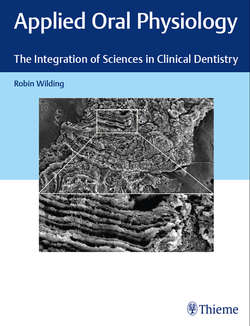Читать книгу Applied Oral Physiology - Robin Wilding - Страница 19
На сайте Литреса книга снята с продажи.
2.2.3 Permeability
ОглавлениеDentin permeability is influenced by the diameter of the dentinal tubule. This diameter varies according to the distance of the tubule from the pulp tissue. The tubules are at their narrowest dimension near the dentin enamel junction (1 μm) and widest nearer the odontoblast, where the average tubule diameter is 2 to 3 μm. The permeability of dentin to fluids is thus greatest near the pulp. The pulp tissue is therefore particularly vulnerable to deep carious lesions or to tooth preparation near the dental pulp (▶ Fig. 2.11). Dentin permeability is also influenced by the amount of peritubular dentin which has been laid down inside the tubule.
After cavity preparation, the permeability of dentin is effectively increased due to the opening of many tubules, 20,000 for every square millimeter of cut dentin. This permeability is reduced within hours of the tooth preparation. This appears to be due to the obturation of the tubule with fibrinogen from the serum.
If dentin is exposed to the oral cavity before peritubular dentin has formed, the tooth becomes sensitive to sweet, hot, and acid foods. These sensations are thought to be due to fluid movement within the tubule which is sensed by the odontoblast or surrounding free nerve endings (see Chapter 10.4.3 Dentin Sensitivity). Young adults who have bulimia suffer from enamel demineralization due to the presence of strong stomach acids in the oral cavity. Sensitivity of dentin occurs as peritubular dentin has not formed. Dentin hypersensitivity is also a common complaint in patients with receding gingiva. This sensitivity is caused by the loss of cementum covering the root surface and the exposure of root dentin tubules.
